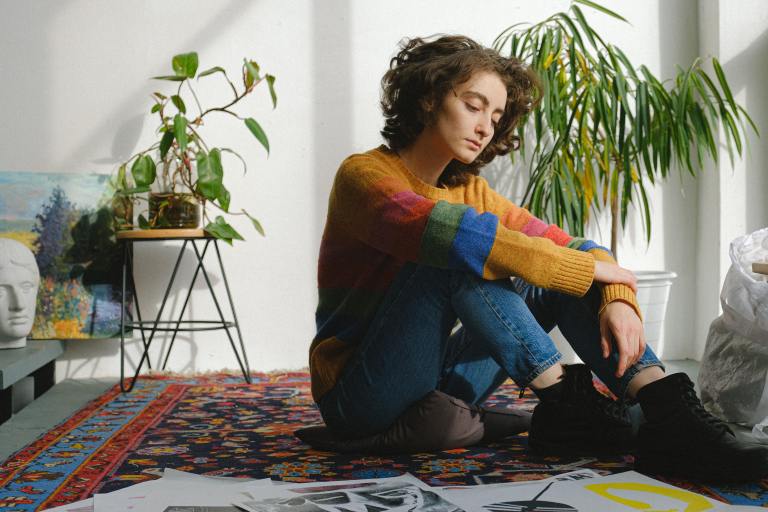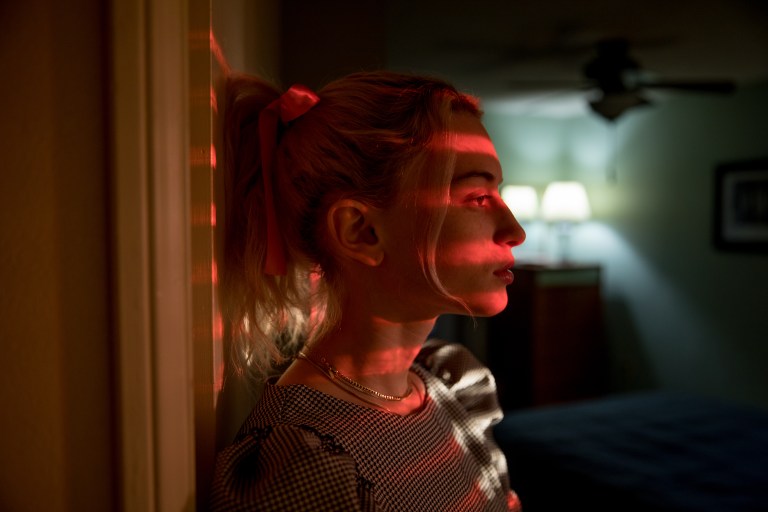This Is Why The Arts Can Help Save Education
There are too many brilliantly qualified post-grads with arts degrees out there without jobs with too many kids in our schools who need them, and this is a gap that needs to be closed.
By Jen Jackson


“To stimulate life, leaving it free, however, to unfold itself, that is the first duty of the educator.” – Maria Montessori, educator (31 Aug 1870-1952)
Think about this. When you are learning something new, it’s because you’re inspired by something. You want to discover, finding your own path in a direction you have selected. You don’t want to be micromanaged in the process, you want the freedom to be autonomous. Just like teachers need some degree of autonomy when teaching a lesson, students need more of this in US education.
This is my fourth year as a performing arts educator, three of them being at charter schools, and one at a fine arts magnet school. I have founded and observed other dance programs in the cities I’ve taught in, have idea shared and collaborated with many others in my networks, and have been involved in my community as a professional dancer. With my B.F.A in dance, professional performance experience, and license to teach, I am very active in the field. I consider arts education to be my noble purpose.
My enthusiasm has been fueled by more than just a passion for my art form, as it is more so my belief that it would be a disservice to our youth if the arts did not exist in our schools. There was one experience I had with a student that permeated me forever and has calcified my belief on the crucial role the arts play in differentiated instruction.
In my second year of teaching I was leading literacy lessons along with teaching dance, in addition to some students I was pulling individually who needed one-on-one practice with certain skills. One student I was working with was somewhere on the spectrum of autism, so I already knew I was up for a challenge, as she of course processed information differently.
We were both getting frustrated as I was having trouble getting her to memorize certain sight words. She had always stuck out to me in dance class as one of my advanced students, consistently following directions, and brilliantly creative. She was clearly a kinesthetic learner, so I figured, why not incorporate movement somehow, as no other strategies seemed to be working.
I told her to come up with a unique movement for how she perceived the word. We had already been working on creative movement elements in dance, so it was perfect. She was coming up with movements lightning fast. As if by magic, she suddenly had no trouble memorizing the words at all, and I was sending her on her way back to class in no time, feeling like I had just uncovered something major.
As educators, we all know that every child has different learning and sensory needs, but it’s not only about different learning profiles, it’s about school being an environment that nurtures the whole child. Just thinking of myself as an adult, I won’t go through an entire day feeling successful in every moment, but the parts of my day that go well are what keeps me in a forward trajectory. If it weren’t for those blocks of the day, there would be no balance, and I would probably switch careers or quit my job.
I’m sure we can all agree that this type of yin and yang is even more pertinent to the sustainability of a long school day in a child’s life. And any discipline such as visual art, music, dance, or theater could be that anchor, as visual art and dance was for me as kid. I struggled a lot with ADD, and I remember the only part of my day where I felt success was directly tied to my visual arts class. It’s even more important that these disciplines are made concretely available in schools, as not every child has the means to afford lessons at private conservatories after school.
Just last week, my current principal (who has an undergrad in music and is a total advocate of the arts in general) told me about her project-based grad school thesis while pursuing her MED. The idea of the study was to compare the impact on learning from multi-disciplinary learning strategies on two different sets of students learning the same content aims, standards, objectives, and assessment over the same amount of time.
Of course, my principal’s cohort of students, group A, were the ones learning the content integrated with the arts. They learned the content through music, dance, theater, visual art, and had a hand in creating and presenting the subject matter artistically, in contrast to the other set of students who learned the content as it would normally be taught. The result was that group A’s assessment scores were significantly off the charts higher than group B’s.
There are too many brilliantly qualified post-grads with arts degrees out there without jobs with too many kids in our schools who need them, and this is a gap that needs to be closed.
While there are tons of schools charging forward holding a torch for the necessary change needed like Ron Clark Academy, Montessori, and schools like Gabriella Charter School of the Arts where core academic subjects and concepts are learned through music and dance integration, everyone else is just trying it on without really investing. In most non-arts specific schools, it’s still more of an afterthought.
It’s one thing to just add dance or theater to your school and call it dance or theater, not having knowledge of what makes someone qualified beyond basic credentials such as a degree and teaching license. In some states, some schools have leniency to hire whoever to teach in arts or academics. I’ve seen teachers get burned out on teaching core academics from all the testing and data pressures into becoming “Pinterest” art teachers.
It’s another to seek out individuals who are qualified to deliver rich instruction from internalizing this art form as a major area of study while having contributed to the field. Having a prosperous arts program is something that can have a huge impact a school’s culture, but it must be done right, by means of investment and forward thinking. It must feel real, and these programs need the proper resources and educators to thrive.
Whether there is appreciation for the arts or not, we live in a creative world, and we are ultimately teaching our students how to be college ready and independent. A big part of this is creative thinking skills. Since art is differentiated in its very nature, and we are propelling towards a culture of more differentiated learning in classrooms, wouldn’t it seem that our kids would benefit from the creative problem-solving skills learned through being proficient in an art form? I am not saying every kid must or will love one of the art disciplines, but we require students to study math, and I don’t know many mathematicians, although its undeniable that math is a required skill for anyone. With that said, nobody ever questions it’s place in education.
It’s also a direct doorway into emotion and the human experience. When studying an art, you develop the ability to look within and see yourself and the world in a non-egotistical way. It gives you the ability to reflect and see feedback in a multi-dimensional way. You build a certain sensitivity to yourself and others, making it easier to feel and build other human connections. With all the revolutionary forms of art and music therapy, it’s known that art is an aid for mental health, which is a national issue that is vastly swept under the rug.
It’s not as though the arts are on an island from everyday life. There is design thinking in almost every major career field. A big part of a representation of any culture. The need to create things is human nature. We like to experiment, and art is the ultimate experimentation of making connections in the world. Think about a baby making a mess of its pudding, it’s human nature, and even therapeutically purposeful. I’ve seen children get portrayed as misbehaving, when they are just being exploratory. Anytime I caught a previous student off task, one that was labeled as “troubled” he was just always finding something to build. It’s children like this who need to be reached by something more than what a mostly dry and rigid school day has to offer, and we are in the business of serving all children.
To help close this gap, teachers need to start collaborating to create interdisciplinary content. Schools need the means to invest, and the awareness to want to do it. Who knows, maybe the dropout rates decrease. Maybe it would reach those students who gave up and didn’t feel successful. It could be the sole thing that saves them. It could just be one of the key to the educational ambiguities and inconsistencies with school cultures that everyone is so exasperated in trying to iron out. Having a creative, upbeat style of learning core content could ultimately up the joy factor in a lot of school cultures.
As the arts are commonly dismissed with the saying, “there’s no money in that,” perhaps it’s time that we stopped broadly misrepresenting the arts as fluff and realize that art just might be the part of home our education system is lacking. Let’s stop saying “starving artists” and instead look at the fact that we are an educational community that is starving for more art. 




